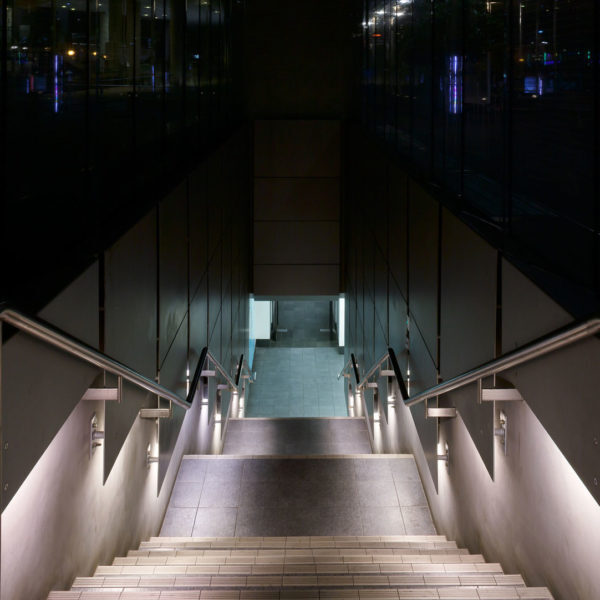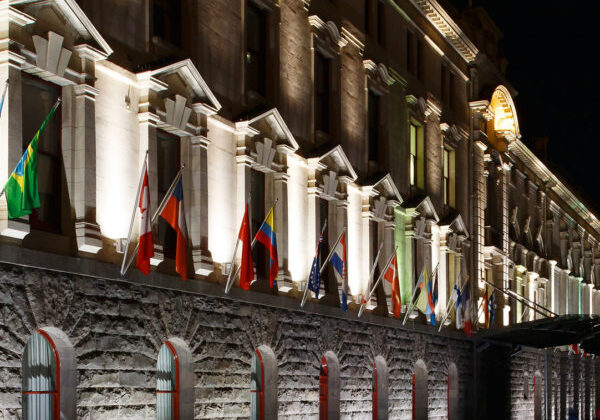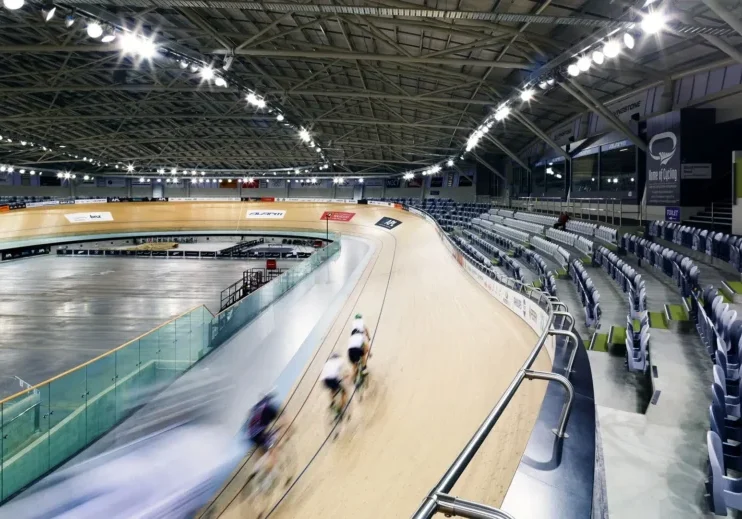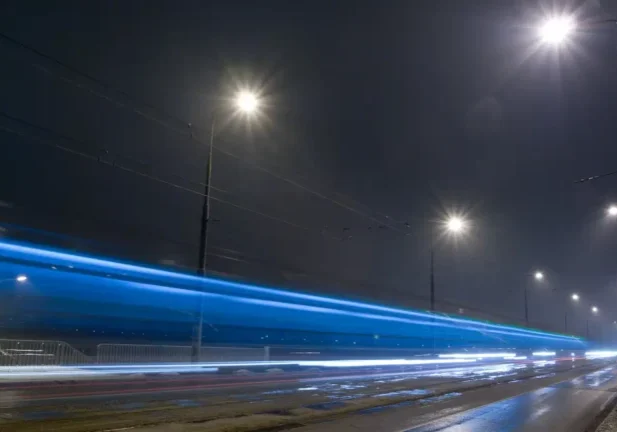Light doesn’t just reveal architecture; it defines it. From how a room feels at sunrise to how a facade glows after dark, lighting shapes how we experience buildings and spaces.
At LDP (Independent Electrical and Illumination Engineers), we don’t treat lighting as an afterthought. We see it as a core part of the architectural toolkit, one that brings spaces to life with precision, beauty, and purpose. Here’s how we’re helping architects and developers integrate lighting into modern architecture.
Incorporating Natural Light in Architectural Design
Natural light is one of architecture’s most versatile elements. Done well, it animates a space, connects interiors with their external environment, and supports occupant well being.
Take our work on the Augusta Apartments Daylighting strategy, for example. We produced a 3D rendered model with large vertical glazing and precise facade modelling to maximise daylight access while reducing solar heat gain. This design not only enhanced interior comfort but also contributed to significant energy savings by minimising reliance on artificial lighting during daylight hours.
Effective daylighting also has proven links to improved mood, productivity, and overall wellness. Our design process considers the quantity and quality of natural light, ensuring it’s diffused, balanced, and responsive to the building’s layout and user needs.
Using Artificial Lighting to Sculpt Space After Dark
While natural light sets the tone during the day, artificial light takes over when the sun goes down, and it’s just as critical to architectural expression. Central to our artificial light design process is light measurement. We assess lux levels, uniformity, glare, and visual comfort at every stage to ensure lighting supports spatial goals without overwhelming them. Our in-house modelling and simulation tools allow us to visualise how light behaves across materials, surfaces, and structures long before a fixture is installed.
From recessed luminaires in hospitality spaces to facade grazing for civic buildings, we tailor solutions to the architecture itself. Lighting becomes a sculptural element, highlighting texture, depth, and volume in subtle but powerful ways.
Smart Lighting Technology for Architecture
Lighting is no longer static. Advances in digital controls, IoT connectivity, and sensor-based systems have made it possible to design lighting that responds dynamically to its environment and users.
Smart lighting for architecture is becoming more common to see. These systems automatically adjust brightness and colour temperature based on time of day, occupancy, or available daylight, creating a seamless balance between performance and efficiency. Our independent lighting and electrical team of engineers integrate these technologies into our lighting plans early, ensuring cabling, interfaces, and control points are coordinated with other building systems.

Contemporary Lighting Aesthetics and Trends
In today’s architecture, lighting must illuminate and integrate seamlessly with the design narrative. Minimalist details, concealed light sources, and adaptive technology reshape how light expresses architectural intent.
One standout example is our Christchurch Gateway Bridge Arches Lighting project right by the airport, where we used dynamic LED sequences to highlight the bridge’s structural rhythm while maintaining visual elegance. The result is a public landmark that shifts in tone and intensity throughout the night, bringing identity and vibrancy to an otherwise utilitarian structure.
We also see growing demand for indirect lighting, linear profiles integrated into joinery, and colour-tunable systems that respond to mood or program. These aren’t just aesthetic decisions either; they’re also part of a broader movement toward architecture that’s emotionally and experientially rich.
Best Practices for Light Integration in Building Design
Bringing light into architecture isn’t a one-size-fits-all approach. Precision, testing, and close collaboration are all required in tandem. At LDP, we follow a considered process to ensure lighting enhances, rather than overwhelms, architectural intent:
- Early Integration: We work closely with architects, engineers, and developers to embed lighting strategy into the design process from the very beginning.
- Material Sensitivity: Surface finishes greatly impact lighting outcomes. Highly reflective materials can cause glare, while darker tones may absorb light and require higher output from luminaires.
- Tailored Specifications: Beam angles, fixture placement, mounting heights, and control systems are all carefully selected to suit the space and its materials.
- Visualisation and Prototyping: We create detailed lighting renders and test setups to model how light will behave in the built environment day or night.
- Design Harmony: Above all, lighting should complement the architecture. Our goal is always to support the design language of each space while enhancing the human experience.
Lighting That Elevates Design
At LDP, our independent lighting and electrical team of engineers understand that lighting shapes experience and emotions. Through careful planning, detailed analysis, and a deep understanding of both form and function, we design lighting that elevates architecture and enhances everyday life.
If you’re ready to explore how light can transform your next development, contact the team today.

























